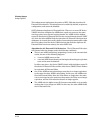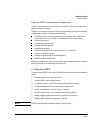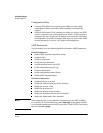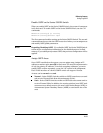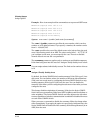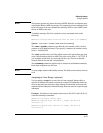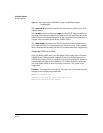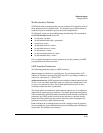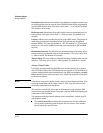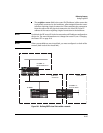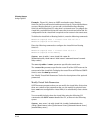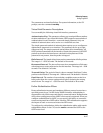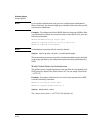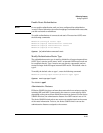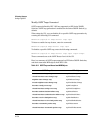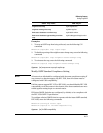
IP Routing Features
Configuring OSPF
Dead-interval: Indicates the number of seconds that a neighbor router waits
for a hello packet from the current Series 5300XL Switch before declaring the
Series 5300XL Switch down. The value can be from 1 – 2,147,483,647 seconds.
The default is 40 seconds.
Hello-interval: Represents the length of time between the transmission of
hello packets. The value can be from 1 – 65535 seconds. The default is 10
seconds.
Priority: Allows you to modify the priority of an OSPF router. The priority is
used when selecting the designated router (DR) and backup designated
routers (BDRs). The value can be from 0 – 255. The default is 1. If you set the
priority to 0, the Series 5300XL Switch does not participate in DR and BDR
election.
Retransmit-interval: The time between retransmissions of link-state adver-
tisements (LSAs) to adjacent routers for this interface. The value can be from
0 – 3600 seconds. The default is 5 seconds.
Transit-delay: The time it takes to transmit Link State Update packets on this
interface. The value can be from 0 – 3600 seconds. The default is 1 second.
Assign Virtual Links
It is highly recommended that all ABRs (area border routers) have either a
direct or indirect link to the OSPF backbone area (0.0.0.0 or 0). If an ABR does
not have a physical link to the area backbone, the ABR can configure a virtual
link to another router within the same area, which has a physical connection
to the area backbone.
Not e A backbone area can be purely virtual with no physical backbone links. Also
note that virtual links can be “daisy chained”. If so, may not have one end
physically connected to the backbone.
The path for a virtual link is through an area shared by the neighbor ABR
(router with a physical backbone connection), and the ABR requiring a logical
connection to the backbone.
Two parameters fields must be defined for all virtual links—transit area ID
and neighbor router.
The transit area ID represents the shared area of the two ABRs and
serves as the connection point between the two routers. This number
should match the area ID value.
16-44



